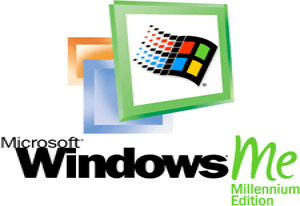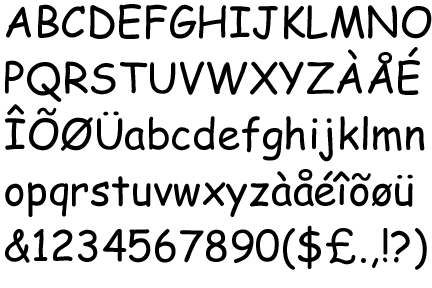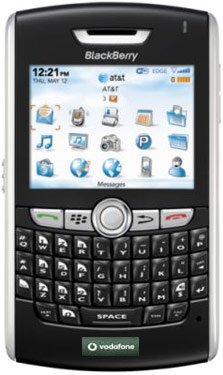Hanvon Technology Co., Ltd leads in manufacturing the best quality e-book reader, along with producing world's best handwriting recognition and OCR and biometric identification technology supplies. The company is also a leader of new-generation consumer electronics product trends.
Hanvon Technology Co. Ltd plans to attend CeBIT2011 in Hanover, Germany (Hanvon booth No. A11-20-1/hall 17) for which it will launch its full line of products. The major product lines that will be displayed at the fair include - e-book readers, tablet PC, graphics tablet and display and Biometric Solution (Face ID). The exhibition is planned to showcase Hanvon's abilities on the global prospects of digital reading and to make the full use of the world's ace ICT fair to target international market, which can contact and discover more about Hanvon and its products.
Hanvon is enriched with its own Research and Development team and manufacturing plants. In addition to having a complete authority and control over its core technologies, it also masters its full control over the quality and manufacturing of the products. Hanvon has a rich background of most sophisticated technologies and exceedingly competent R&D efforts since a decade that has made it a shining star in the intelligent identification field. The astounding R&D endeavors and new-generation consumer electronics products have already been quite recognized all around the world.
Below are mentioned some of the most successful breakthroughs made by Hanvon Technology that will be displayed at CeBIT2011:
1) e-Book readers - Hanvon 200dpi high-resolution WISEreader and color WISEreader:
CeBIT2011 will see the world's first large screen 200 DPI high resolution WISreader and also the world's first large screen WISEreader this year. Both are equipped with a 9.7-inch E INK screen, supporting WIFI and 3G, along with powerful supporting reading functions, network function and business office software. Hence, these products can cater to perfect high-quality paperless office and reading. It is quite easy and convenient to manipulate them using Hanvon electromagnetic pen.
The users can easily comment, modify and excerpt articles using these readers with the Hanvon third-generation pressure sensitive electromagnetic pen. The designs give a perfect future picture of paperless reading and an accurate, easy and fluent writing.
2) Graphics Tablet – Hanvon Art Master III
Since digital painting has become a trend amongst the art directors and painters these days; using digital technology for creating animations is taking over the creative industry as well. Here, Hanvon Art Master III becomes an essential for such needs, as it leads the world in professional graphic tablets. The specifications include the following:
- 2,048-level pressure sensitivity
- Showcases the thickness and intensity changes of lines in a subtle way.
- Can easily make depictions, paintings and copying.
- Has larger creative space and makes art creation more easy and fluent.
3) Pen Display - Hanvon SenTIP
Hanvon SenTIP (one of the graphics tablet and display) is a wireless passive electromagnetic pressure sensitive technology that is quite unique in itself and also is the perfect coordination of high-definition LCD and the graphics tablet technology. It is the Hanvon’s patented technology and its specifications include the following:
- It is equipped with the LED-backlit display technology that gives it higher brightness and more lifelike color.
- It has quite powerful annotation capabilities.
- When combined with a projection screen it can be well used for giving a demonstration, for teaching and reporting purposes and other presentations.
- It can record handwritings perfectly and conveniently.
- It features 1,024-level pressure sensitivity and the wireless passive technology that helps in forming the hand feeling of paintings subtle and smooth.
The Hanvon booth on CeBIT2011 will fully display how the SenTIP when integrated with educational software can perfectly be used for school education. This set of teaching facilities will encouragingly promote the application and development of SenTIP in Germany’s education field.
4) Tablet PC - Hanvon HPad:
Hanvon HPad is one of the high-end portable tablet PCs. Its features involve the following:
- Ultra-thin body that is just 10.8mm thick, with a magnesium alloy frame and a brushed stainless steel shell.
- Android 2.2 Operating System.
- Built-in WiFi, 3G and Bluetooth
- Handwriting recognition
- Built-in dual cameras.
- Special identification functions for texts, business cards, translation and human faces.
The current versions of Hanvon HPad are also equipped with the Hanvon Bookstore client, which can enable users to download and read e-books. Hanvon HPad can work perfectly in integrating office, leisure and entertainment for business people.
5) Tablet PC - Hanvon TouchPad:
Hanvon Touchpad is the new-generation tablet PC built and launched in cooperation with Microsoft and Intel targets the business people. It has a stylish design and offers a wide array of practical functions and applications. Also known as "iPad killer", this touchpad has the following features:
- Lightweight as it weighs just 990 grams and has a stylishly designed body.
- Slim frame, i.e. its body is just 18mm thick.
- Supports a 1024 x 600 (16: 9) resolution, 2GB DDR2 memories and 250GB hard drives.
- Can give you an easy access to audio and video.
- Supports USB mini HDMI, Audio in/out and works on Microsoft Windows 7.
6) Biometric Solution (Face ID) – Hanvon F710
Hanvon F710 is an embedded facial recognition system that works on Dual Sensor Facial Recognition Algorithm. This can be used for time attendance and for access control applications. The design is quite efficient and perfect for the commercial market areas like Enterprise bank, building automation etc.
With the display of above mentioned 6 products at CeBIT2011, Hanvon will be taking a step forward in becoming the Internet-based integrated high-tech enterprise through R & D, product manufacture, channel sales, content integration and service innovation.



















